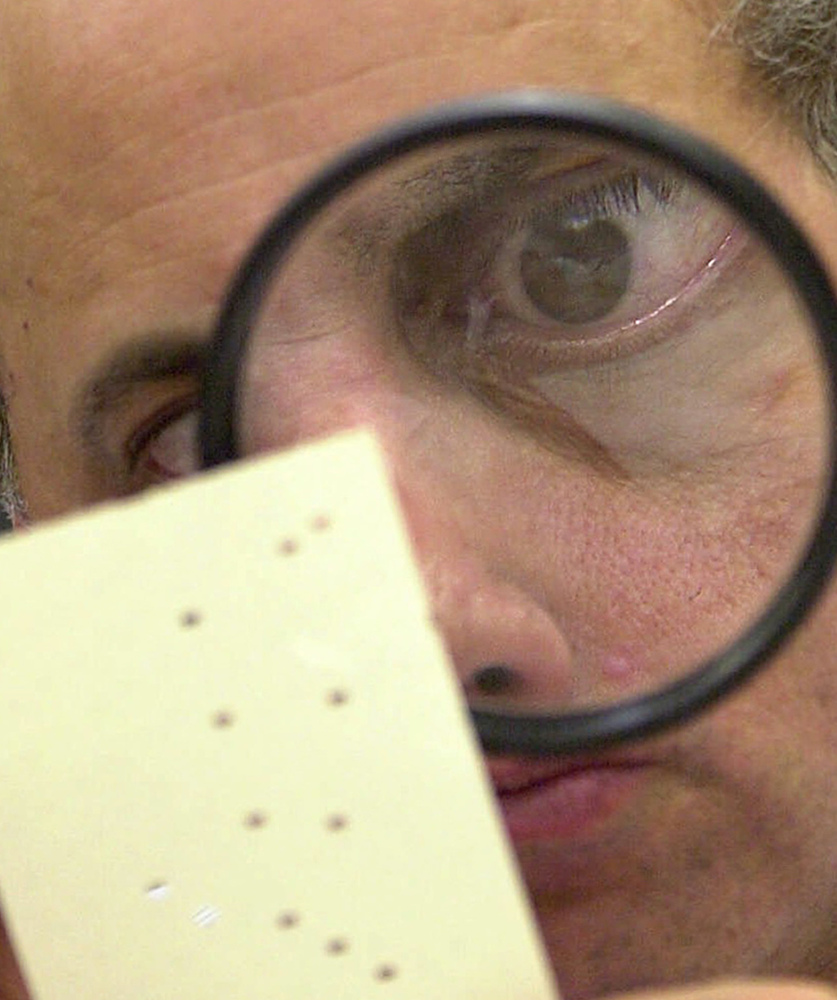YARMOUTH — The Electoral College will make Donald Trump the official winner of the presidential election Monday, although he lost the popular vote to Hillary Clinton by nearly 3 million ballots. Americans know that the Electoral College is part of the Constitution; few know that our winner-take-all method of awarding state votes (except Maine and Nebraska) is a creature of state law with no constitutional mandate whatsoever.
When the winner-take-all system results in a “loser wins” outcome, as it has five times since 1824, the upside-down result can delegitimate the most important election in American politics. But what the states create, the states can change; the election of 2016 illustrates why they should.
Last month Trump won the Electoral College by 78 votes: 307 to Clinton’s 232, winning 31 states to her 19. Support for both was demographically concentrated. Clinton carried 46 of the 50 most populous counties, including Orange County, California, which had not voted Democratic since 1936; Trump got just four of them, including Pinellas County along Florida’s strategically key I-4 corridor, while taking over 3,000 non-urban counties.
Using recent Cook Political Report tallies, 136,448,445 Americans cast 62,955,343 votes for Trump, 65,788,567 for Clinton, giving her a popular vote win of almost 3 million and a percentage margin of 2.1 percent. But Clinton’s states had fewer electoral votes than Trump’s; thus, the efficiency of his vote-spread and the winner-take-all system ensured a “loser wins” outcome.
It gets worse: The winner-take-all system, combined with the apportionment of electoral votes, means it is possible to win the presidency with far fewer voters than the minority who cast ballots for Trump. For example, in the 2010 census 127 million Americans lived in the 39 smallest states; registration trends by November 2016 suggest at least 83 million of them were registered to vote. Assuming a 55 percent turnout, as in 2016, that would come to 45.65 million voters. With just 50 percent-plus-one of those voters, Trump or Clinton could have netted the 270 electoral votes needed to win the presidency based on just 22,825,000 popular votes, equivalent to 11 percent of registered voters, about 7 percent of the U.S. population.
This scenario seems extreme. In fact, it is the way our winner-take-all system for deciding presidential elections operates: candidates compete to stack up enough state-level majorities, no matter how small, to reach 270. The bias is toward the states, not the nation.
The pernicious effect of that system operating in the deeply polarized social and political conditions of November’s election was to magnify divisions in the nation at large, leaving the winner without a mandate to speak on behalf of the country as a whole.
No less a constitutional authority than James Madison warned of the dangers of selecting a national president through winner-take-all state ballots. In 1823 and again in 1826 he proposed an amendment banning the practice. No enthusiast for direct election, Madison nonetheless wanted the presidency more tightly linked to popular preferences.
His solution was to require Electoral College electors to be chosen at the district level (think Maine and Nebraska), believing that voters’ shared interests would increasingly transcend their status as co-residents of a particular state. His amendment was not to be and his views about state loyalties seem tragically premature in light of the Civil War. Yet Madison’s belief that the unifying purpose of a national president was better served by a national vote, even one based on voting districts, was prescient.
The right to vote appears nowhere in the Constitution’s original text and for the first nine elections, no popular presidential vote was even recorded. But support grew rapidly, and by 1870 voting was so axiomatic a part of being a free citizen that it was enshrined in the 15th Amendment.
In 1876, when deal-making in the House of Representatives overturned the popular vote victory of Samuel Tilden, giving the electoral win to Rutherford Hayes (in return for withdrawing troops from the South), wags dubbed Hayes “His Fraudulency” ever after.
An initiative to value all voters equally has been adopted by statute in 11 states. Called the National Popular Vote interstate compact, it would allow states to allocate their electoral votes to the candidate winning the most popular votes in all states and D.C. It would take effect only when adopted by states with enough electoral votes – currently 270 – to ensure that the popular vote winner actually becomes president. For the first time in our history, Americans’ votes for the most important office in the land would not have less value than a vote for village mayor. In 2008, the Maine Senate adopted the compact; next year, both chambers should.
Send questions/comments to the editors.



Comments are no longer available on this story